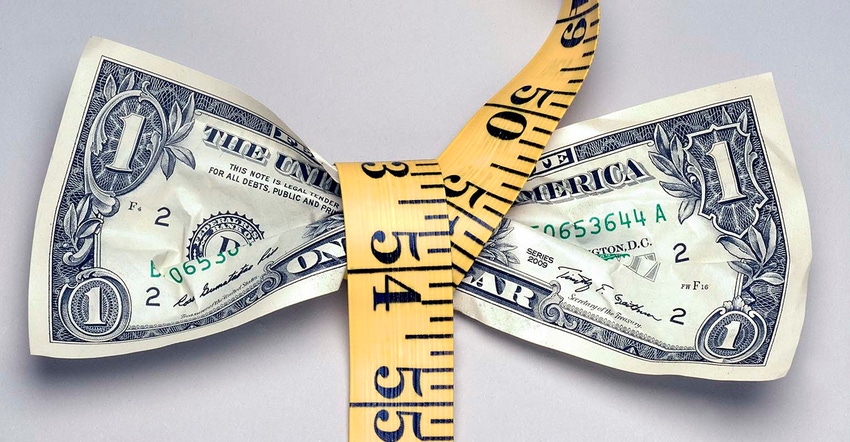
Back in November, I saved a social media post made by a farmer who seemed proud that he had pulled the trigger on new crop sales. The post reads “Sold 5,000 bushels at $5.08 new crop 2022, right or wrong it’s better than the 5,000 I sold last year at 3.30 for the 21 crop.”
My immediate thought at that time was, “How do you know?” It is unlikely he had all of his costs locked in by that time. How does he know that $5 corn will be more profitable than $3.30 unless you have your costs locked down?
Suppliers tell me as many as one-third of farmers still don’t have their fertilizer and chemicals locked in as of this moment. Their standard operating procedure has been to wait until spring.
I am not criticizing anyone’s timing of purchasing inputs. I would however highlight, that since we are experiencing unprecedented volatility, we don’t know that $5 for corn will be a worthwhile price.
Cost inflation has been a hot topic for many months now, and in light of recent global events in Ukraine, it is only going to get worse.
Best profit margin possible
Our objective as farmers isn’t to just get a higher price than the year before. The objective is to get the best profit margin possible. If we don’t know what our costs are, by locking in a sale, all we have done is limited our potential profit and created risk towards input price inflation.
It is possible this individual purchased calls and participated to the upside. That we don’t know. What we do know, is that suppliers are having trouble even making sure they are going to have the product, let alone get you a favorable price.
With the added turmoil in Ukraine, grain prices might be going higher, but so are input prices. In terms of the global export market, Russia accounts for 23% of ammonia, 14% of Urea and 21% of Potash.
It is significant.
Inputs locked in
I have had my inputs locked in for 2022 for a long time. But frankly, I am concerned about 2023. Unless Russia throws down their weapons and surrenders, I think they have introduced a new level of market volatility and inflation that will take a year or more to figure out. This is why we have been very hesitant about making new crop sales.
For those who don’t have their inputs locked in yet, $5 corn could very likely be breakeven. With the recent added volatility, we may need $6 to make any money. The market blew the doors off the old $3 to $4 trading range and it is still working to establish what that new trading range will be.
I have said for some time, that $6 corn may be the new $4 corn, but we won’t know for a while. If I had to imagine a scenario for record corn prices this would be the year.
Brazil’s woes
It is very likely that the biggest loser in agriculture (other than Ukrainian farmers) are those in Brazil. Nearly 85% of their fertilizer is imported and 22% of it comes from Russia, their single largest importer.
While Brazil’s next soybean planting season is over six months away, the supply chain that delivers the fertilizer that allows it to happen begins now. They were already facing calls for fertilizer shortages before war in Ukraine. This could put a lid on production in Brazil for the 2022/23 season if they can’t get enough fertilizer, further bolstering price support.
There is going to have to be a tremendous amount of supply re-sourcing if they are going to have the fertilizer to plant their next crop. My family farm in Minas Gerais can’t even get a bid to lock in the cost right now, let alone get something bought. International suppliers don’t even know what they are going to be able to deliver on, let alone provide prices.
Return to normal?
We don’t see a quick return to “normal”, especially the longer this turmoil drags on. We can only speculate, but it could be Putin’s intention to redefine part of the supply chain, directing fertilizer and food production towards China rather than the West. This would undoubtedly have a major impact on food production and cause tremendous inflation, while at the same time providing a more secure food source for China’s growing needs.
Be aware of the high correlation between market prices and input costs. If market prices move higher, input costs are moving higher. If you don’t have your costs locked in, don’t get ahead of yourself by taking what seems like a good price, just because it is better than the year before.
Matthew Kruse is President of Commstock Investments. He can be reached at 712-227-1110.
Futures trading involves risk. The risk of loss in trading futures and/or options is substantial and each investor and/or trader must consider whether this is a suitable investment. Past performance is not indicative of future results. Trading advice is based on information taken from trades and statistical services and other sources that CommStock Investments believes to be reliable. We do not guarantee that such information is accurate or complete and it should not be relied upon as such. Trading advice reflects our good faith judgment at a specific time and is subject to change without notice. There is no guarantee that the advice we give will result in profitable trades.
The opinions of the author are not necessarily those of Farm Futures or Farm Progress.
About the Author(s)
You May Also Like






